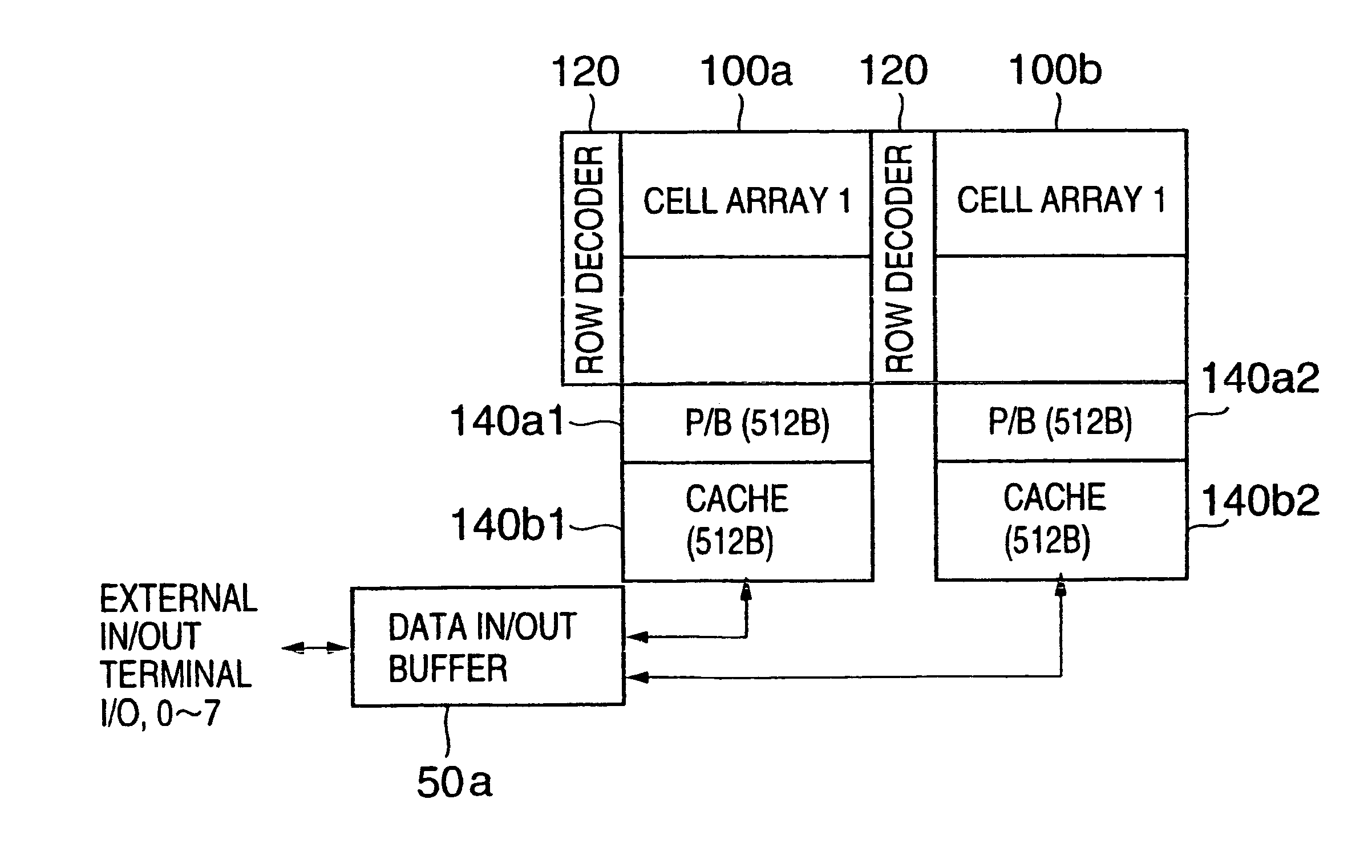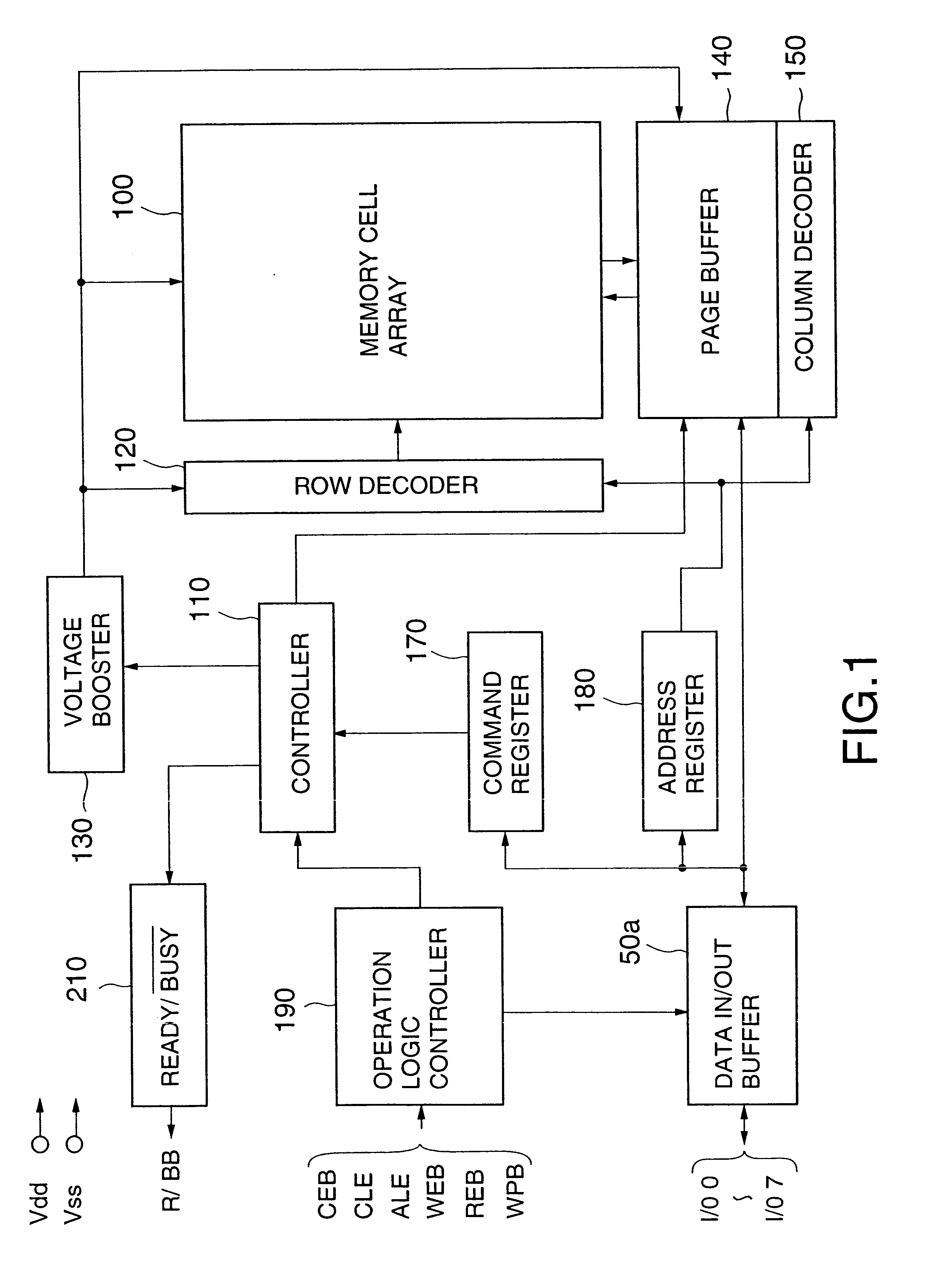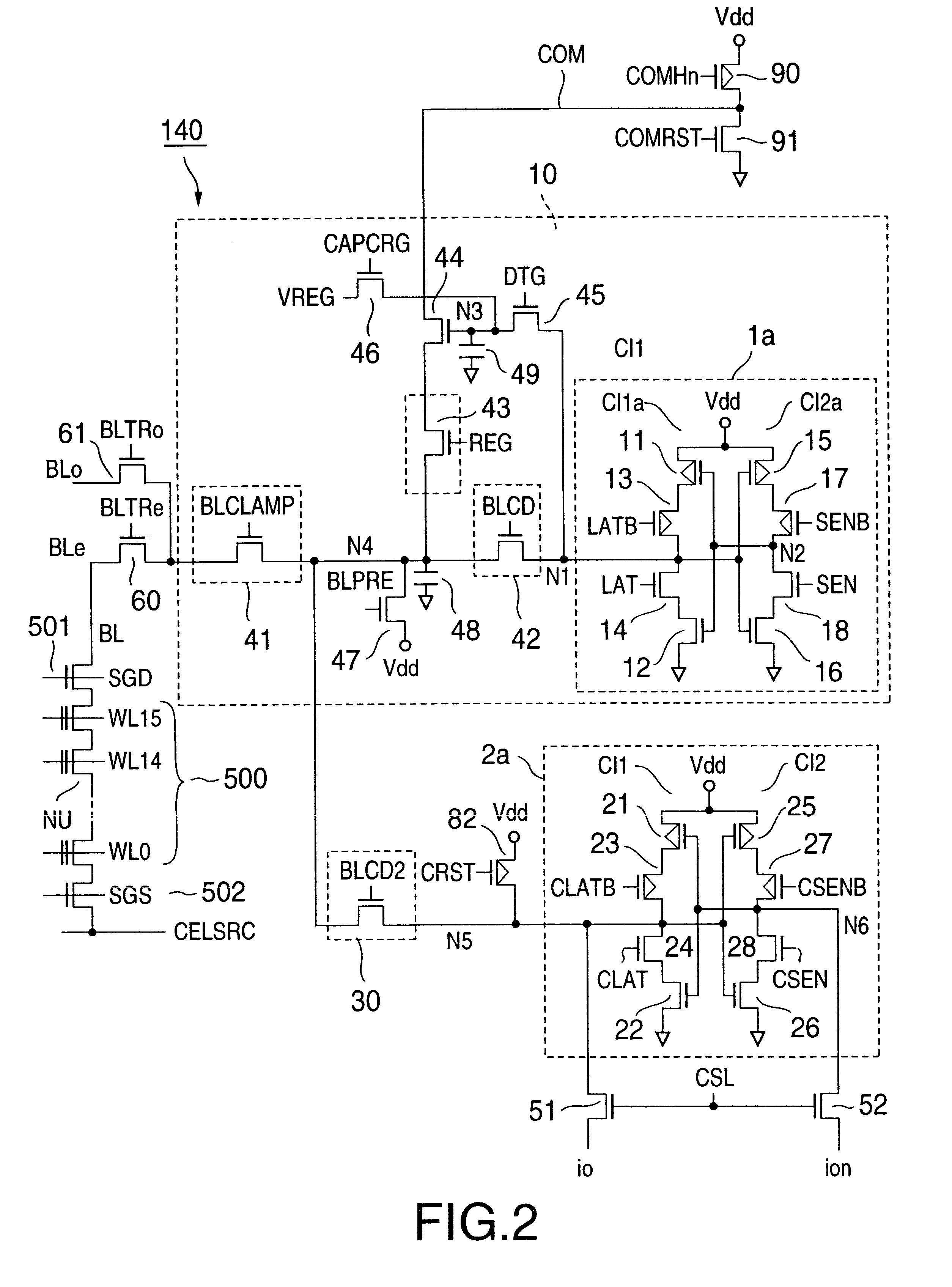Non-volatile semiconductor memory
a non-volatile, semiconductor technology, applied in static storage, digital storage, instruments, etc., can solve the problems of increasing the number of data units, consuming a lot of power, and taking a long time to load data for each increase in data units, etc., to achieve the effect of large storage capacity
- Summary
- Abstract
- Description
- Claims
- Application Information
AI Technical Summary
Benefits of technology
Problems solved by technology
Method used
Image
Examples
first embodiment
[0186]A multilevel logic operation in the first embodiment is disclosed in detail.
[0187]The first embodiment performs a multilevel logical operation under the relationship between a threshold level Vt of the memory cell 100 and 2-bit data, as illustrated in FIG. 43B.
[0188]The Vt-data relationship in FIG 43B is different from that in FIG. 43A. The same tact in FIGS. 43A and 43B is that the upper-bit data and the lower-bit data correspond to different row addresses. In detail, only in a multilevel operation, two addresses are prepared for the same cell to be selected.
[0189]Row addresses allocated to the upper and the lower bits are called the first row address for multilevel operation and a second row address for multilevel operation, respectively.
[0190]In FIG. 43B, the first (upper) bit and the second (lower) bit are the data in selection of the first row address and the second row address for multilevel operation, respectively. For example, the data ““10” is composed of the first (u...
second embodiment
[0328]To overcome such a problem, the second embodiment performs resetting of the second latch 2a just after data transfer from the latch 2a to the first latch 1a, as shown in FIG. 26, or performs the resetting always before programming operation.
[0329]The resetting of the second latch 2a is required before the initial data loading. However, resetting at unstable timing to the latch 2a during programming can be eliminated with no resetting at entry of “80H” and address daring programming.
[0330]FIG. 27 illustrates a programming operation using a cache memory for eliminating such resetting at unstable timing, which is applicable to the operations FIGS. 25A to 25C.
[0331]In detail, 2-page simultaneous programming starts after 2-page data loading “Load 1” and “Load 2”, and then, on completion of data transfer from the second latch 2a to the first latch la and latch (2a)-resetting (C, Rst), R / BB is set a quasi-ready state “HIGH”.
[0332]This sequence allows resetting the latch 2a only befor...
third embodiment
[0343]The third embodiment thus also achieves high effective programming speed although programming in the multilevel made takes long compared to usual two-level mode for storing 1-bit data to one nonvolatile memory cell.
PUM
 Login to View More
Login to View More Abstract
Description
Claims
Application Information
 Login to View More
Login to View More - R&D
- Intellectual Property
- Life Sciences
- Materials
- Tech Scout
- Unparalleled Data Quality
- Higher Quality Content
- 60% Fewer Hallucinations
Browse by: Latest US Patents, China's latest patents, Technical Efficacy Thesaurus, Application Domain, Technology Topic, Popular Technical Reports.
© 2025 PatSnap. All rights reserved.Legal|Privacy policy|Modern Slavery Act Transparency Statement|Sitemap|About US| Contact US: help@patsnap.com



